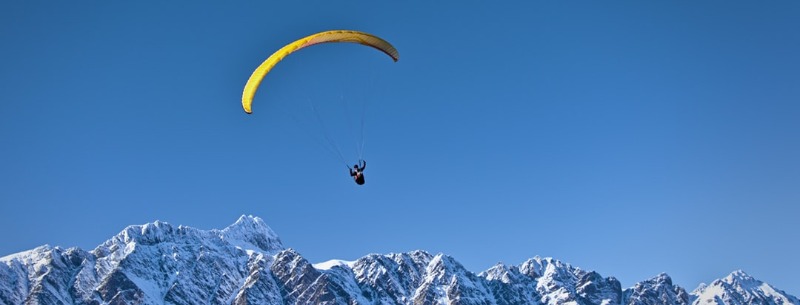If you intend to go paragliding in Colorado, you will not miss the fact that a lot of flying takes place in mountainous terrain. Even by US standards, some rather high mountains can be flown here. Colorado straddles the Continental Divide and consequently, the state has a high average altitude.
No coastal flying here, Colorado is surrounded by other states of the US.
One of the biggest sites is Villa Grove, which is sometimes referred to by the locals as ‘Little Owens Valley’ because of its similarities to the hot, dry Owens Valley in California. Great conditions in summer for paragliding in Colorado.
An impressive mountain range to check out if you are considering paragliding in Colorado is the Sangre De Cristos. Averaging over 3700m (12,000ft) in height above sea level, it runs for nearly 100km (60 miles), south of the Villa Grove launch site. That’s what I call a ridge! Plenty of thermals pop off it too.
Weather
In a word, dry. Like much of the US West region. Light winds often prevail in the mornings.
Pilots flying from Villa Grove will tell you that from May to August there can be strong, and often rough, thermal conditions during the middle of the day. So strong that thermal-marking cumulus clouds can easily grow into over-developed monsters, thunderstorms in other words. They reach out and influence a lot of surrounding air, making it risky for paraglider pilots who might be flying a light breeze one minute but bucking a very stiff breeze a while later.
Gust fronts are another weather challenge if you are paragliding in Colorado – local pilots can see one coming and will make sure they are on the deck well before it hits. Reminds me of a time I was flying Lochiel Ridge, South Australia, in a Mars 170 hang glider, and noticed a rain squall approaching. It was quite obvious, a rapidly approaching line of dark, low cloud. I top-landed, and was glad I wasn’t in the air when the gusts and rain hit!
All this sounds scary, but the solution is simple – listen to what your instructors or other experienced pilots say about the local weather and don’t fly when conditions are suspect. 90% of the time its totally safe, so there’s no need to take chances during the other 10%.
In the evenings, conditions often subside to dead-calm, ‘glassing off’ as the locals say.
Pilots who sign up for a specialist mountain flying clinic are given plenty of know-how as to when and when not to paraglide in the high mountain areas since the weather up there has its own quirks. It’s even more important to avoid bad weather when paragliding in Colorado amongst the craggy peaks! According to climbers in the area, the dry conditions mean rapid temperature changes often occur at altitude.
Flying
Those light winds in the mornings are perfect for some gentle slope soaring on one of the varieties of great slope sites in Colorado. A variety of slopes are available depending of course on weather conditions and sometimes other factors beyond a pilot’s control. All have a rating, for example, a P2 site might have a smallish landing zone meaning it’s not for learners or P1s.
In the San Juan Valley, a rather unique opportunity exists for paragliding in Colorado. Quite often, a temperature inversion forms above the valley floor at around 600m (2,000ft). Normally, such an inversion puts a lid on any thermals in the area. But if a pilot is working a particularly good thermal, it is sometimes possible to punch through the inversion and gain a lot more height. It might then be possible to fly back onto the San Juan Mountains and contact strong ridge soaring conditions. And thermal lift coming off the sun-lit mountain slopes as well!
But conditions can become challenging towards the middle of the day when winds above the inversion become rather strong, and the thermals get ragged-out by the wind making them bumpy.
I know from personal experience how un-satisfying a really rough thermal can be, flying in a sailplane, so it must be a lot worse in a paraglider! In fact, I read a guy’s report on some paragliding flights he had in this area in ‘blustery thermals’ and he likened it to being ‘a leaf in the wind’. Mmmm.
Here is some more info on that great site near Villa Grove. The launch site faces SW at about 3200m (10,600ft), 490m (1,600ft) above the primary landing zone. An easy landing zone, which is just a huge area of grass! You can fly here between April to October most years.
Keen paragliding students can do specialized courses in high mountain areas such as Aspen. The local flying schools offer one-on-one instruction aimed at honing pilot skills and knowledge in such areas as local site reading and analysis, micro-meteorology, cross country preparation, and thermal visualization. Wow.
